JHP Newsletter - 2016, No. 1, 24 April
Greetings from near Monroe, Oregon. Jan and I are helping her daughter and her daughter's boyfriend build two tiny houses!
In addition to the usual newsletter information, I'm excited to let you know about the special project I mentioned last time: my first iOS app is now available through the iTunes app store! More on that below.
Equipment: Replacing Stolen Gear
You probably remember that practically all of my gear was stolen in December and that most of it had been insured. Well filing the insurance claim was interesting. I had had the insured items scheduled with a replacement cost of roughly what I had paid for them figuring that I would get that replacement price back if I filed a claim — wrong. The insurance company paid the lesser of what I had listed on the schedule as the replacement cost and the current replacement cost. Some items were worth much less (the two 1D X bodies for example) so I had been paying an unnecessarily higher premium for those items, and some items are worth more now than when I purchased them (some lenses and the direct-replacement Gitzo tripod for a discontinued model that I had), so I didn't receive enough money to cover the replacement cost. It was a win-win for the insurance company. In order to have the insurance work better in the future, I've set up a wish list at a major online camera company with all of the items that I have insured and I'll update the scheduled replacement cost of them every year to keep my premiums more in line with what the insurance company will pay out.
Instead of replacing my EF 180mm f3.5 L Macro USM, I had been thinking about using a TS-E 90mm f2.8 with extension tubes for macro shooting because the TS-E 90 has fairly good close-focusing capability on its own. But even with all three Kenko DG Teleplus Extension Tubes (12mm, 20mm, and 36mm to replace the stolen Canon 12mm and 25mm tubes), I could only cover a subject that was more than about 3/4 of an inch (1.9 cm). Plus, when setting up a shot and positioning the tripod, in order to focus closer, the front element gets closer to the subject so you have to move the tripod back. It was so frustrating to use the TS-E 90 for macro images that I quickly bought an EF 180 Macro. Having the right tool for the job sure makes it easier to concentrate on the image instead of fighting with the tool.
Canon was nice enough to announce the EOS 1D X Mk II in early April, so I quickly got on a list for one and hope to have one by the time I really need a second body for active shooting in early/mid May.
Tour: Tanzania in February 2017
Join me for an amazing 15-day photo safari to Tanzania in February 2017 where we will visit two of the most famous locations in East Africa to view and photograph wildlife: Ngorongoro Crater and Serengeti National Park. We will be there during the height of the wildebeest birthing season for lots of predator-prey interaction.
Travel: Valley Of Fire State Park, Nevada
Jan and I spent about two months (December and January) near Lake Mead and Valley Of Fire State Park in Nevada. It's a great place to spend the winter because the temperatures are mild and there's plenty of sun for solar electricity. Valley Of Fire State Park is a favorite location for landscape photography, and having the opportunity, and desire, to get out and back on my knee after surgery in November, was great for my physical and mental therapy.
Valley Of Fire State Park is a fantastic area with multi-colored sandstone formations. Some areas have wonderful fins (below left) that run perpendicular to the other layers of sandstone. We took some day trips to nearby Gold Butte, and I loved this set of contour lines (below center). The clear weather I mentioned earlier isn't very good for grand landscape photography, but we did get some good clouds occasionally and I was finally able to make a nice image of this small butte (below right) that I had discovered on a previous visit.
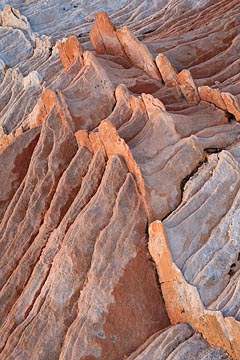
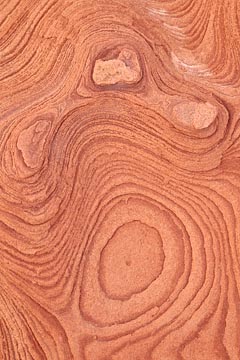
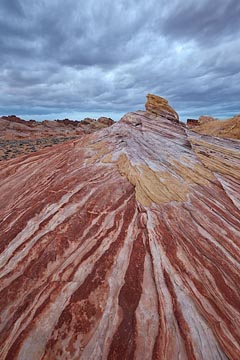
The variations in the sandstone provides many interesting intimate scenes (below left and right).
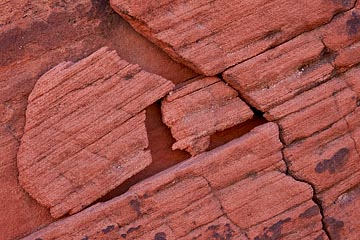
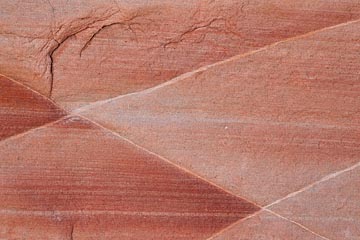
The color on the clouds at sunrise was good on two mornings (below), and on the second morning was some of the best color I've had to work with in years!
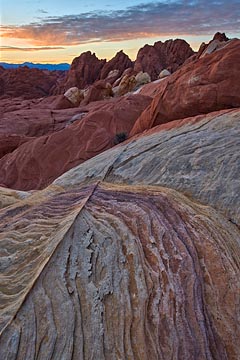
1/2, 1/4, 1/8, 1/15, 1/30 sec; f11; ISO 100
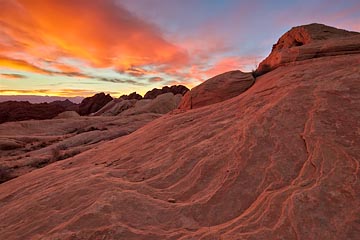
Travel: Grand Teton National Park, Wyoming
I spent about the first two weeks of February in Grand Teton National Park. I had planned to just make a short stop there, probably a few days, on my way to Yellowstone, but I found a very cooperative cross fox (below) and wanted to spend as much time as possible with it. A cross fox is a partially melanistic color variant of the red fox (Vulpes vulpes).
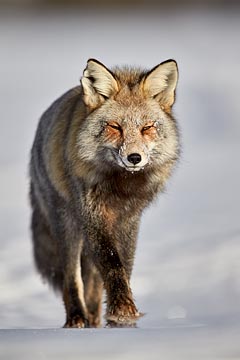
1/1000 sec, f5.6, ISO 160
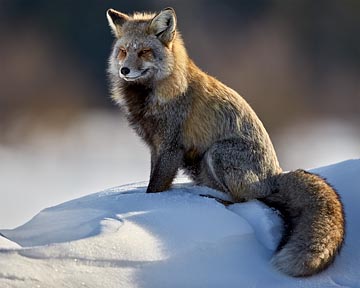
I also wanted to get some good images of the Tetons in the winter, and that proved difficult because the weather didn't cooperate very much for that. I was able to make this image (below left) on my first morning there, but then it took almost another two weeks to have good conditions again. I really wish I had replaced my stolen TS-E 45mm f2.8 because that lens would have been better for a similar composition than the TS-E 24mm f3.5 L II which made the Tetons a bit small in the frame. I also hadn't replaced the stolen 1.4x III that used to live in my f-stop bag, and had left my single remaining 1.4x III tele-extender back in the car with my 600, and an effective 37mm lens would have been better for a similar composition, so I made a point to bring the 1.4x on subsequent excursions out into the snow, but conditions were never good again to improve on that image. During my wait, it was foggy on a couple of mornings and that usually means hoar frost. On one of those foggy mornings, conditions were perfect for photographing the hoar-frost covered bare trees (below right).
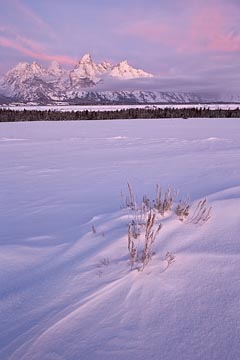
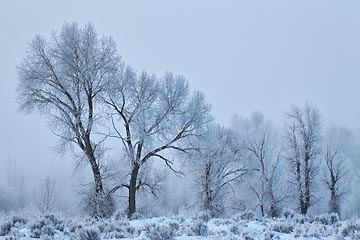
I also saw and photographed ruffed grouse (Bonasa umbellus) for the first time (below left). The state bird of Pennsylvania, where I was born and raised, is the ruffed grouse, so I knew there was such a thing but had never seen one before.
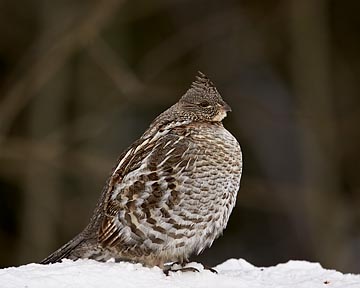
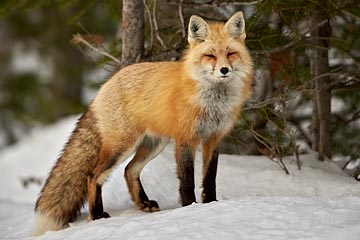
I also photographed at least three different typical red-colored red foxes. One hung out near where I was camped (above right) and I photographed it several times. Two others were starting to pair up at the beginning of mating season, and one afternoon I followed them as they hunted in the sagebrush flats. The image below is a composite of the vixen (female) pouncing on a rodent beneath the snow. The image below that is the dog (male) crossing an open section.
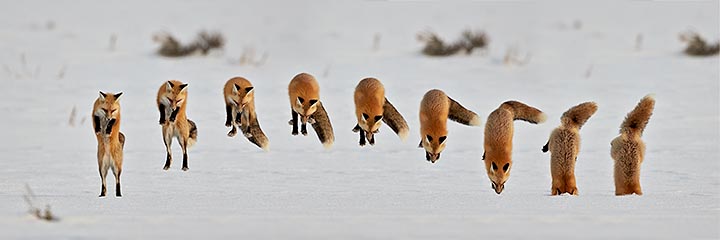
On my last morning, the clouds developed some subtle color above the Tetons for one final nice grand landscape image (below right).
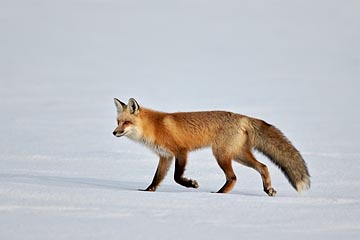
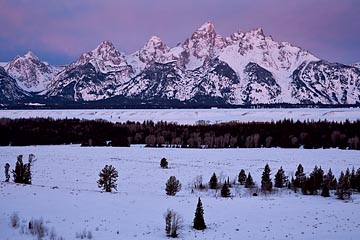
Travel: Badlands National Park, South Dakota
I had planned to go to Yellowstone after Grand Teton, but the temperatures had been getting warmer so the snow was starting to melt and no new snow was forecast for the near future, so I headed over to Badlands National Park in South Dakota for a week towards the end of February. (I also had some business to take care of in South Dakota that I'll explain later.) The weather was fairly cooperative in terms of clouds, but it was usually extremely windy in the afternoons and at sunset so I mostly only photographed in the morning.
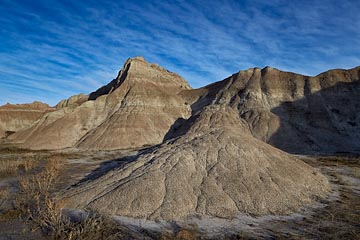
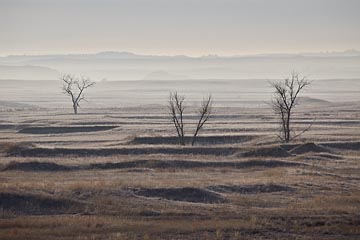
Most of my attention was turned to the forms created by the eroded badlands (above left and below left), but one morning there were no clouds but some interesting haze so I concentrated on the grasslands (above right).
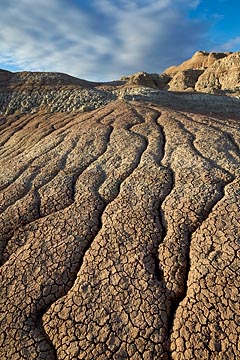
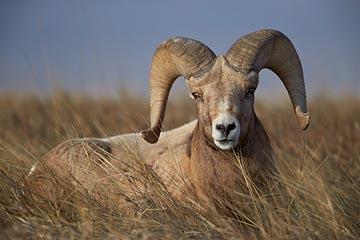
I also saw photographed some wildlife including this bighorn (Ovis canadensis) ram resting while chewing his cud (above right).
Travel: Prescott, Arizona
Then I headed south to meet up with Jan for about two weeks near Prescott, Arizona. We went kayaking on Watson Lake and discovered lots of waterfowl, so I was able to use my new camera mount for the Delta 12.10 for the first time (below left). You can see the LensCoat cover for the 600 in Digital Camo. I didn't like the Forest Camo Green cover that I had on my previous lens because it was too dark, so having it stolen was the perfect opportunity to get the lighter Digital Camo cover. I really like the background for this image of a double-crested cormorant (Phalacrocorax auritus, below right).
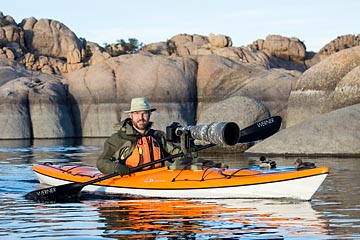
1/500 sec, f9, ISO 1000, © Jan Forseth
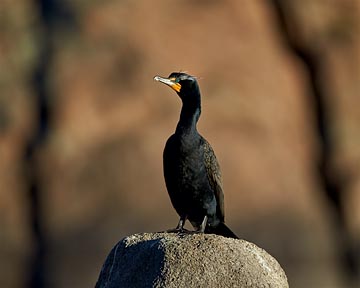
1/1500 sec, f5.6, ISO 200
Jan and I also finalized our plans to head to Oregon to help build the tiny houses, so we started to make our way up to Oregon.
Travel: Alabama Hills, California
We spent about two weeks at the end of March in the Alabama Hills near Lone Pine, CA. I love the landscape there with the eroded granite rock formations. The wildflowers were starting to bloom, and a scarlet milkvetch (Astragalus coccineus) provided a nice foreground element for this image taken shortly before sunset (below left). After may tries, the clouds were good at sunrise for a grand landscape image, and I knew exactly where I had to go for a nice composition (below center).
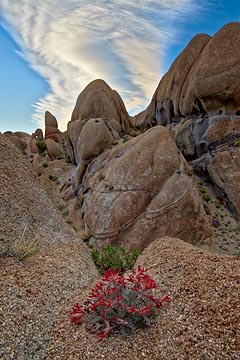
1/8, 1/15, & 1/30 sec; f11; ISO 100
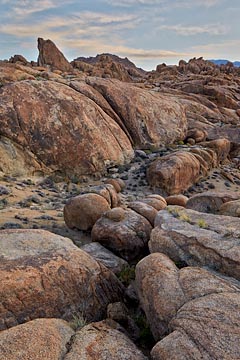
1/90, 1/45, 1/20, 1/10, & 1/6 sec; f11; ISO 100
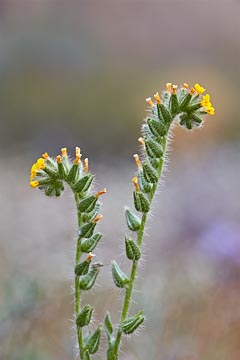
1/30 sec, f4.5, ISO 100
The wildflowers were a big surprise and I was caught unprepared because I put off buying a macro lens, to replace the one that had been stolen, until I would need one in May. I tried to use my TS-E 90mm and extension tubes so I could focus closer, but it was very frustrating. Jan lent me her macro lens one morning and I was able to concentrate on making nice images instead of fighting with camera gear. I had seen and photographed bristly fiddleneck (Amsinckia tessellata) before (above right), but the desert larkspur (below left) was new. The blue flower on the California sage (Salvia columbariae) inflorescence is about 1/4 in (6 mm) from top to bottom.
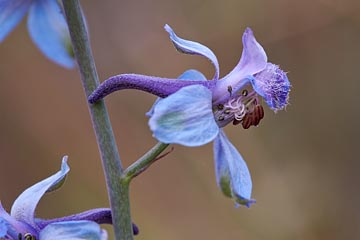
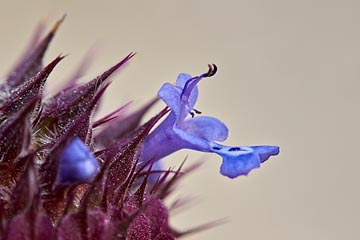
One morning when the clouds didn't cooperate, I concentrated on intimate landscape images including this one of a fairly round boulder resting up against some huge slabs of rock (below left). On one our last evenings, the clouds finally lit up nicely at sunset and I was able to make a nice image of Cyclops Skull Arch (below right).
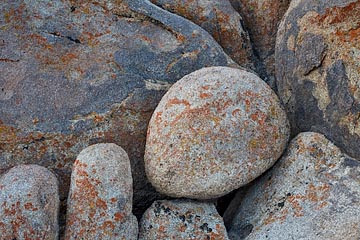
1 sec, f16, ISO 100
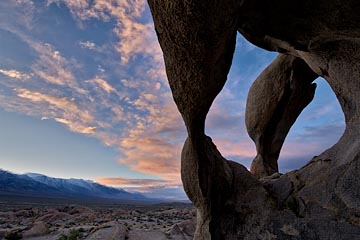
1/6, 1/10, 1/20, 1/45, & 1/90 sec; f11; ISO 100
My First iOS App — A'Weather
After seven years, I've released my first iOS app!
Back in 2009, shortly after starting to live full-time in an RV, I couldn't figure out how to maintain my website design business on the road because I wanted to concentrate on photography when the photography was good and didn't want to have clients interrupting. I wanted to be able to have multiple income streams and at the same time be in control over when I would focus on each stream. This was shortly after Jan got her first iPhone, and she suggested that I could develop apps. That made sense because I had been programming most of my life. It was a big part of my job as an aerospace engineer and I developed database-driven websites by hand-coding PHP.
In June 2009, I bought Programming in Objective-C 2.0, A complete introduction to the Objective-C language for Mac OS X and iPhone development by Stephen G. Kochan to learn how to develop iPhone apps. Well, I went through the first couple of chapters and then got distracted by our time in Canada and Alaska. :) Plus, I didn't have an app that I really wanted to develop.
In February 2014, I knew what app I wanted to develop, so I went back to the Objective-C book and started going through it again from the beginning. All of my engineering work had been in Fortran, but I was using Unix workstations that were running a C shell, so I already knew some C, plus PHP is similar to C, so all of the procedural part of Objective-C was easy to pick up. What was a challenge was the object-oriented nature of Objective-C. Plus, I didn't like the way code was broken down into .h (interface) files and .m (method) files because it seemed like a vey inefficient duplication of effort.
In June 2014, Apple announced the Swift programming language. Swift consolidates the information that Objective-C had in the .h and .m files into one, easy-to-read file. I was so excited that I stopped going through the Objective-C book (I was about 2/3 of the way through it), and waited for Apple to release Swift to the public which they did in August 2014.
In July 2015, I bought Swift in 24 Hours, Sams Teach Yourself, and started to learn Swift. The book was good for learning Swift, but it didn't get into how to develop an iOS app with it, so in August 2015 I started to go through the The iOS Apprentice Third Edition tutorials from RayWenderlich.com that dealt with developing iOS apps using Swift. Before the end of the month, a weather app that I had been using for years, and which was no longer being supported by the developer and had gradually been loosing functionality with each new iOS release, started giving me a new problem which made it impossible to add a new location. I was far enough along in the iOS Apprentice tutorials to have been exposed to everything I would need to develop my own weather app, so I decided to make that my first app. Well, just being exposed to a technique isn't quite the same as knowing how to apply those techniques in a new context, so there was still a big learning curve when I started to work on A'Weather in October 2015. (A'Weather is short for Avanti Weather, and Avanti Applications is my app business.) Fortunately, I discovered a great resource at stackoverflow.com (SO), so I could just google the problem I was having and then go to the answer on SO. By early December 2015, A'Weather was not only my day-to-day weather app but also Jan Forseth's. I had one "small addition" I wanted to make before releasing it to the public, and it turned out to be a very complicated capability to add.
A'Weather was ready for a larger group of beta testers in January 2016, so I started a paid Apple Developer account in order to use the TestFlight beta testing environment and also prepare the app for sale. I was shocked that I couldn't create a developer account for my business because it was just a sole-proprietorship doing business as (DBA) Avanti Applications. Apple requires contracts for such developers to be with the legal entity behind the business, and I didn't want "James Hager" to be selling the apps through the iTunes store. So, I set up "Avanti Applications, LLC" a legal entity that Apple would be happy to enter into a contract with. That also meant I had to open up yet another new bank account which required a trip to South Dakota where my business is headquartered.
My expanded pool of beta testers found problems with A'Weather because they were using it in ways that I hadn't anticipated or fully tested, so more work was required to polish the app. It also took a while to complete the migration of my Apple Developer account from an individual ("James Hager") to an organization ("Avanti Applications, LLC").
There was much rejoicing, and also some trepidation, when I released A'Weather v1.0.1 to the public on April 4, 2016. You can download it here.
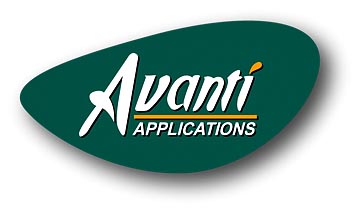
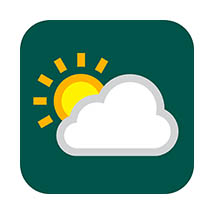
A'Weather has several features that are particularly useful for me and probably for other photographers. It allows a forecast to be obtained for practically any location in the US by using the GPS coordinates of your current location, an address, or GPS coordinates that you enter. It provides sunrise and sunset times for each location. It has an hourly graph of percent-sky-cover which is good for grand landscape photography to determine if the sky is likely to be interesting. It has animated radar and satellite imagery so you c an see where the current weather is and where it's going. It also stores all of the data that you download on the device so it's accessible when you're out of cell or WiFi coverage.
I'm currently working on my second app, the one that really energized me in 2014, and I plan to have that completed by the end of the year.
A big thank you to Jan Forseth who planted the seed way back in 2009, was an alpha tester, and allowed me to spend so much time on my "little project."
Take care and happy shooting.
— James
James Hager Photography :: www.jameshagerphoto.com




